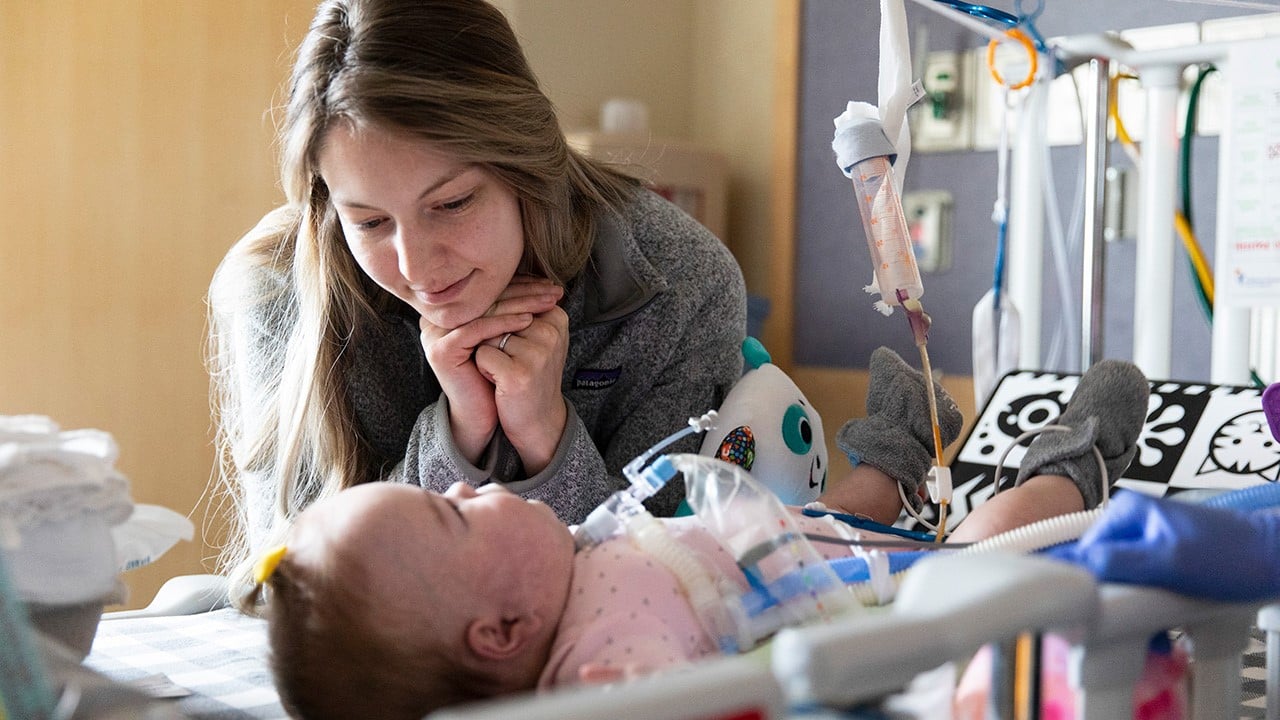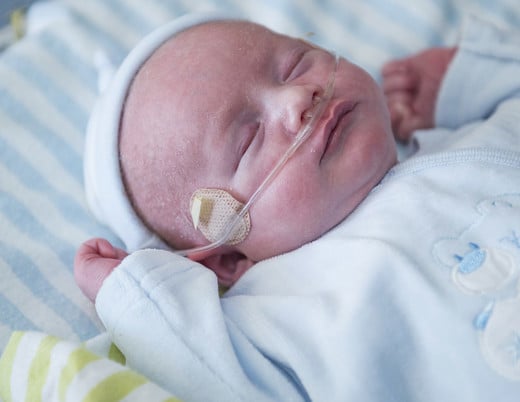Key takeaways
-
Very preterm infants — those born before 34 weeks’ gestation —face greater risk for sudden unexpected infant death (SUID).
-
This study found no association between increased parental NICU visitation time and adherence to safe sleep practices at home.
-
Parents with anxiety or depression symptoms, no insurance or public health insurance, or infants with intraventricular hemorrhage were less likely to adhere to safe infant sleep practices after neonatal intensive care unit (NICU) discharge.
-
Future research should seek to understand barriers to and facilitators of safe sleep compliance while considering involvement of additional caregivers in order to create more targeted and effective interventions in the NICU for these infants.
Research study background
Infant safe sleep practices play a critical role in decreasing sudden unexpected infant death (SUID), the top cause of death for U.S. infants older than 1 month. Preterm infants face two to four times higher risk of SUID than their full-term counterparts, yet their parents are less likely to adhere to safe sleep practices.
The prolonged hospitalization of very preterm infants (born before 34 weeks gestation) offers families increased engagement with and exposure to safe sleep practices modeled in the Neonatal Intensive Care Unit (NICU). In this study, a team of Children’s Hospital Colorado neonatologists sought to determine if greater maternal presence during a preterm infant’s NICU stay impacted post-discharge adherence to safe sleep practices.
Of the four Colorado NICUs included in the study, each provided safe sleep education to parents with in-person instruction, written materials or videos around the time of discharge. Among the 203 parents of infants born before 34 weeks enrolled in the study, 109 completed surveys six weeks after discharge.
When study authors analyzed survey data, they found only 77% of participants were fully compliant with recommended safe sleep practices. While the number of maternal days per week spent visiting the NICU was not associated with adherence to individual safe infant sleep practices, disproving the study hypothesis, several other factors seemed to impact adherence.
Mothers with symptoms of anxiety or depression, public health insurance or no insurance, and whose infants had intraventricular hemorrhage were less likely to adhere to safe sleep practices after NICU discharge. The association between maternal depression or anxiety and lower adherence is not well understood. Probable links between maternal mental health status and infant sleep problems gave way to a hypothesis that frequent infant awakenings may prompt mothers to engage in unsafe sleep practices. Previous studies have also shown individuals with non private health insurance exhibit lower adherence to safe sleep practices, likely representative of other social determinants of health influencing maternal infant care practices.
Clinical implications
These findings highlight an urgent need to develop effective interventions in the NICU specifically targeted towards engaging and educating families of preterm infants, such as better preparing families for how to respond to frequent nighttime awakenings at home. Medical providers should demonstrate safe sleep practices and model safe sleep positioning for all infants in the NICU while keeping family interactions open and nonjudgmental. As part of this work, one of the study authors is working to develop a series of educational safe sleep videos for Children’s Colorado’s NICUs as part of a University of Colorado grant program.
Future research should explore factors hindering maternal adherence to safe sleep practices, as well as identifying elements that facilitate compliance, while considering the involvement of additional caregivers.
Featured Researchers

Susan Hwang, MD, PhD, MPH/MSPH
Neonatologist
Neonatal Intensive Care Unit
Children's Hospital Colorado
Associate professor
Pediatrics-Neonatology
University of Colorado School of Medicine

Stephanie Bourque, MD, MSCS
Neonatologist
Neonatal Intensive Care Unit
Children's Hospital Colorado
Associate professor
Pediatrics-Neonatology
University of Colorado School of Medicine





 720-777-0123
720-777-0123










